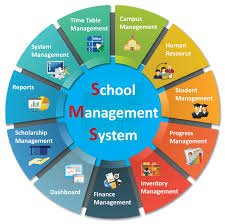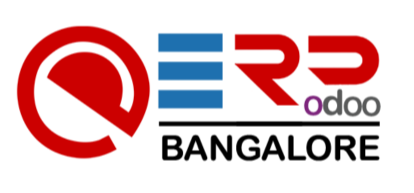Introduction to School Management Systems
Overview of School Management Software
The education sector is experiencing a wave of technological advancements, and School Management Systems (SMS) are at the forefront of this transformation. These software solutions are designed to streamline administrative processes, enhance communication, and ultimately improve the overall efficiency of educational institutions.
An SMS acts as a centralized platform that integrates various functionalities crucial for school operations. These functionalities can encompass a wide range of areas, including:
- Student Information Management: Store and manage student data, including demographics, academic performance, attendance records, and disciplinary actions.
- Faculty Management: Facilitate faculty onboarding, track workload and schedules, and manage communication between teachers, staff, and parents.
- Curriculum Management: Develop and manage lesson plans, distribute course materials, and track learning outcomes.
- Attendance Tracking: Monitor student and staff attendance electronically, automate notifications for absences, and generate detailed reports.
- Grading and Assessment: Record and manage student grades, create online assessments, and track academic progress over time.
- Fee Management: Streamline the process of collecting tuition fees, manage online payments, and generate financial reports.
- Communication Tools: Enable secure communication channels between teachers, parents, and students through features like email, messaging, and online forums.
- Resource Management: Manage school resources such as library materials, equipment inventory, and classroom space allocation.
- Reporting and Analytics: Generate comprehensive reports on student performance, attendance data, and other key metrics to inform decision-making.
Importance of Efficient School Management
Schools today face a multitude of challenges, including managing growing student populations, complying with evolving regulations, and ensuring efficient resource allocation. A well-implemented SMS can address these challenges by:
- Enhancing Administrative Efficiency: Automating routine tasks such as attendance tracking, grade recording, and report generation frees up valuable time for school administrators and faculty, allowing them to focus on more strategic initiatives.
- Improved Communication and Collaboration: SMS facilitates seamless communication between teachers, parents, and students, fostering a more collaborative learning environment. Parents can stay informed about their child’s progress, and teachers can easily share updates and resources with students and colleagues.
- Data-Driven Decision Making: The comprehensive reports and analytics generated by SMS provide valuable insights into student performance, resource allocation, and overall school operations. Educators can leverage this data to identify areas for improvement, personalize learning experiences, and make informed decisions to enhance educational outcomes.
- Increased Student Engagement: Many SMS platforms offer features that can promote student engagement, such as online learning tools, interactive resources, and gamified learning experiences. These features can make learning more interactive and enjoyable for students.
- Improved Resource Management: By providing a centralized platform for managing resources like textbooks, equipment, and classroom space, SMS can optimize resource allocation and reduce administrative burden.
The overall impact of a well-implemented SMS extends beyond administrative efficiency. By fostering a more collaborative and data-driven environment, SMS can play a significant role in enhancing student performance, improving communication within the school community, and ultimately contributing to the success of educational institutions.

Key Features of School Management Software
School Management Systems (SMS) offer a comprehensive suite of features designed to streamline various aspects of school operations. Let’s delve deeper into some of the core functionalities that can significantly enhance efficiency and improve the learning experience for all stakeholders.
Student Information Management
- Student Profiles: Create and manage detailed student profiles that encompass demographic information, academic records, medical history, emergency contact details, and disciplinary actions (if applicable). This centralized data repository facilitates easy access to student information for teachers, administrators, and parents.
- Enrollment Management: Streamline the student enrollment process by automating tasks like online application forms, document verification, and fee collection. This can significantly reduce administrative burden and improve efficiency during admissions seasons.
- Attendance Tracking: Implement electronic attendance tracking systems that allow students and staff to clock in and out using ID cards, key fobs, or mobile applications. This eliminates manual attendance registers, reduces errors, and generates real-time reports for absenteeism analysis.
- Performance Tracking: Monitor student academic performance by recording grades, test scores, and assignments within the system. This allows teachers to track student progress over time, identify areas requiring improvement, and personalize learning strategies accordingly.
- Behavior Management: Some SMS offer features for recording and tracking student behavior incidents. This can be valuable for maintaining discipline, identifying patterns, and implementing targeted interventions for students who require additional support.
Academic Administration Tools
- Class Scheduling: Facilitate efficient class scheduling by considering factors like teacher availability, student course selections, and classroom capacity. SMS allows for automated scheduling that adheres to pre-defined course requirements and avoids conflicts.
- Course Management: Create and manage course curriculums, distribute online learning materials, and track student progress within individual courses. Teachers can leverage the platform to share resources, assignments, and announcements with students in a centralized location.
- Exam Management: Design, administer, and grade online exams and quizzes. SMS can automate grading processes, generate reports on student performance, and identify areas where the curriculum might require adjustments.
- Gradebook: Maintain a digital gradebook that allows teachers to record and track student grades for assignments, quizzes, and exams. The system can automatically calculate overall grades and provide students with easy access to their academic performance data.
- Lesson Planning Tools: Some SMS offer features that assist teachers in creating and managing lesson plans. These tools can include templates, curriculum alignment tools, and resource libraries to streamline lesson planning and ensure alignment with educational standards.
Financial and Administrative Management
- Fee Management: Automate the process of collecting tuition fees, activity fees, and other school charges. SMS can integrate with online payment gateways to facilitate secure and convenient fee collection from parents.
- Financial Reporting: Generate detailed financial reports on income, expenses, and budget allocation. This financial transparency allows school administrators to make informed decisions regarding resource allocation and identify areas for cost optimization.
- Budgeting Tools: Develop and manage school budgets within the SMS platform. These tools can help track spending against allocated budgets and ensure efficient resource utilization.
- Staff Payroll: Manage staff payroll by processing salaries, deductions, and tax calculations. This can save time for administrators and ensure timely and accurate payments to staff members.
- Inventory Management: Track school inventory of essential items such as textbooks, equipment, and classroom supplies. SMS can generate alerts for low stock levels and streamline the process of reordering supplies.
Communication and Collaboration Tools
- Email and Messaging: Facilitate secure communication between teachers, parents, and students through internal email systems or integrated messaging platforms. This allows for timely communication of announcements, progress updates, and important school information.
- Online Forums and Discussion Boards: Create online forums or discussion boards where students, parents, and teachers can interact, share ideas, and collaborate on projects. This can foster a more connected school community and promote student engagement.
- Parent Portal: Provide parents with a secure online portal to access their child’s grades, attendance records, school calendar, and communication from teachers. This level of transparency keeps parents informed and involved in their child’s education.
- Emergency Notification System: Disseminate critical information and alerts during emergencies through SMS broadcasts or mobile app notifications. This ensures timely communication with the entire school community in case of unforeseen circumstances.
By implementing these key features, School Management Systems empower schools to operate more efficiently, enhance communication, and ultimately create a more engaging and data-driven learning environment for students, teachers and administrators.
Benefits of Implementing School Management Systems

School Management Systems (SMS) offer a multitude of advantages that extend far beyond simply automating tasks. By streamlining processes, fostering data-driven decision making, and enhancing communication, SMS can significantly improve the overall educational experience for students, teachers, and administrators. Let’s delve deeper into some of the key benefits of implementing an SMS:
Improved Administrative Efficiency
- Streamlined Workflows: SMS automates repetitive administrative tasks like attendance tracking, grade recording, report generation, and fee collection. This frees up valuable time for school administrators and faculty, allowing them to focus on more strategic initiatives such as curriculum development, professional development, and student support services.
- Enhanced Time Management: With automated tasks and centralized data management, educators and administrators can spend less time on paperwork and data entry, and more time on core responsibilities like lesson planning, student interaction, and professional development.
- Resource Optimization: SMS provides school administrators with a clear picture of available resources, including classrooms, equipment, and staff. This data-driven approach allows for optimal scheduling, resource allocation, and identification of areas where resources can be better utilized.
Enhanced Student Performance Tracking
- Data-Driven Instruction: SMS allows educators to track student progress in real-time, providing valuable insights into individual strengths and weaknesses. This data can be used to personalize learning plans, identify students who require additional support, and adapt teaching methods to cater to diverse learning styles.
- Performance Analytics: Comprehensive reports generated by the SMS provide detailed analysis of student performance across different subjects, classes, and demographics. This data can be used to identify patterns, address learning gaps, and measure the effectiveness of teaching approaches.
- Early Intervention: By monitoring student attendance, participation levels, and academic performance, teachers can identify at-risk students early on. This allows for timely intervention and targeted support to get students back on track before they fall behind.
Strengthened Parent-Teacher Communication
- Improved Communication Channels: SMS facilitates secure and transparent communication between teachers and parents through features like email, messaging, and online portals. This allows for regular updates on student progress, behavior concerns, and upcoming school events.
- Increased Parental Involvement: With access to student data and progress reports through parent portals, parents can stay actively involved in their child’s education. They can collaborate with teachers to address learning challenges and celebrate academic achievements.
- Enhanced Feedback Mechanisms: SMS can provide a platform for parents to share feedback with teachers and school administration. This two-way communication fosters a collaborative environment and ensures that all stakeholders are working towards the same goal of student success.
These are just a few of the many benefits that School Management Systems offer. By leveraging the power of technology to streamline processes, personalize learning, and enhance communication, SMS can empower schools to create a more efficient, data-driven, and ultimately, a more successful learning environment for all.
Factors to Consider When Choosing School Management Software
With a plethora of School Management Systems (SMS) available in the market, selecting the right solution for your school can be a daunting task. Here are some key factors to consider to ensure you choose an SMS that aligns with your specific needs and provides long-term value for your institution:
Scalability and Customization Options
- Scalability: Consider the size of your school and its projected growth. Choose an SMS that can adapt to your evolving needs. Look for solutions that offer flexible pricing plans that scale with student enrollment or add-on features that can be incorporated as your requirements change.
- Customization Options: Not all schools have the same needs. Ideally, the SMS should offer some level of customization to allow you to tailor features and functionalities to your specific curriculum, administrative processes, and reporting requirements.
- Integration Capabilities: Ensure the SMS integrates seamlessly with existing systems you might already be using, such as student information systems, learning management platforms, or accounting software. This eliminates the need for duplicate data entry and streamlines workflows.
User-Friendly Interface and Accessibility
- Intuitive Design: The SMS interface should be user-friendly and easy to navigate for all stakeholders, including teachers, administrators, parents, and even students with varying levels of technical expertise. A clear and intuitive design minimizes the time required for training and ensures smooth adoption by the entire school community.
- Mobile Compatibility: In today’s mobile-driven world, ensure the SMS is accessible through mobile devices like smartphones and tablets. This allows for on-the-go access to features like attendance tracking, communication tools, and student progress reports.
- Accessibility Features: The SMS should cater to users with disabilities by incorporating features like screen reader compatibility, keyboard navigation, and alternative text descriptions for images. This ensures inclusivity and allows all users to access information and functionalities effectively.
Data Security and Compliance
- Data Security: Student and school data is highly sensitive. Choose an SMS with robust security measures in place, such as data encryption, secure login protocols, and regular backups. Ensure the vendor has a proven track record of data security and adheres to industry best practices.
- Compliance with Regulations: Depending on your location, your school might be subject to data privacy regulations like GDPR (General Data Protection Regulation) or FERPA (Family Educational Rights and Privacy Act). Ensure the SMS complies with all relevant data privacy regulations to protect user information and avoid legal repercussions.
- Data Backup and Recovery: In the event of unforeseen circumstances like system failures or cyberattacks, a reliable data backup and recovery plan is crucial. Choose an SMS that offers secure data backups and a clear recovery process to minimize downtime and ensure data integrity.
Additional Considerations:
- Vendor Reputation and Support: Research the vendor’s reputation for customer service and technical support. Ensure they offer reliable and responsive support to address issues and answer questions promptly.
- Cost and Implementation: Consider the total cost of ownership, including licensing fees, implementation costs, and ongoing maintenance charges. Evaluate the implementation process to ensure it is smooth and minimizes disruption to school operations.
- Free Trials and Demos: Many vendors offer free trials or demo versions of their SMS. Take advantage of these opportunities to test the software in your environment and assess its suitability for your school’s needs.
By carefully considering these factors and conducting thorough research, you can choose a School Management System that empowers your school to operate more efficiently, enhance communication, and ultimately, create a more successful learning environment for all stakeholders.
Implementation and Integration Process

Selecting the right School Management System (SMS) is just the first step. A successful implementation process is crucial to ensure the SMS is adopted effectively by the entire school community. Here’s a breakdown of the key phases involved:
Planning and Preparation Phase
- Needs Assessment: Before embarking on the implementation process, conduct a thorough needs assessment to identify your school’s specific requirements and challenges. This analysis will guide the selection of functionalities and features within the chosen SMS.
- Goal Setting: Define clear goals for implementing the SMS. These goals could include improving communication with parents, streamlining administrative tasks, or enhancing student performance tracking. Establishing measurable objectives allows you to track progress and evaluate the success of the implementation.
- Stakeholder Engagement: Actively involve key stakeholders, including teachers, administrators, parents, and even student representatives, throughout the process. Gather feedback, address concerns, and provide them with transparent communication about the upcoming changes.
Deployment and Training Phase
- Implementation Timeline: Develop a detailed implementation timeline that outlines key milestones, resource allocation, and training schedules. This plan ensures a smooth transition and minimizes disruption to daily school operations.
- User Training: Provide comprehensive user training for all stakeholders on how to navigate the SMS and utilize its various features effectively. Offer training sessions in different formats, such as in-person workshops, online tutorials, or video demonstrations, to cater to different learning styles.
- Onboarding Process: Establish a clear onboarding process for new faculty and staff to ensure they are comfortable using the SMS and can leverage its functionalities to their full potential.
Integration with Existing Systems
- Data Migration: If your school uses existing software for student information, accounting, or other functions, develop a data migration plan to seamlessly transfer relevant data into the new SMS. Ensure data integrity and avoid duplication during this process.
- Software Integration: Explore integration options with your existing software systems. Many SMS solutions offer pre-built integrations with popular learning management platforms or accounting software. This eliminates the need for manual data entry and streamlines workflows across different systems.
- Seamless Workflow: Test all functionalities and integrations thoroughly to ensure a smooth and efficient user experience. Refine workflows and address any integration issues before fully deploying the SMS to the entire school community.
By following a well-defined implementation and integration process, schools can ensure a successful transition to a new School Management System. Effective planning, comprehensive training, and seamless integration with existing systems pave the way for the SMS to become a valuable tool that empowers educators, administrators, and ultimately, creates a more positive learning environment for students.
Case Studies and Success Stories

Real-Life Examples of School Management Software Implementation
School Management Systems (SMS) are transforming the way educational institutions operate around the world. Here are some real-life examples of how schools have successfully implemented SMS to achieve remarkable results:
- Improved Communication and Collaboration: A large high school in California implemented an SMS to streamline communication between teachers and parents. The system’s online portal provided parents with real-time access to grades, attendance records, and school announcements. This transparency fostered a more collaborative environment and led to a significant increase in parental involvement.
- Enhanced Student Performance Tracking: A middle school in Texas utilized an SMS to track student progress in detail. Teachers were able to leverage data analytics to identify at-risk students early on and provide them with targeted interventions. This data-driven approach resulted in a noticeable improvement in overall student performance across various subjects.
- Increased Administrative Efficiency: A small rural school district deployed an SMS to automate administrative tasks like attendance tracking, grade recording, and report generation. This freed up valuable time for school administrators to focus on strategic initiatives and professional development for teachers. The streamlined processes led to a significant reduction in administrative burden and improved overall operational efficiency.
Testimonials from Schools and Educational Institutions
Here are some testimonials from schools that have witnessed the positive impact of implementing an SMS:
- “Since implementing the SMS, communication with parents has become much more efficient. Parents are now actively involved in their child’s education, and this collaboration has significantly contributed to student success.” – Dr. Sarah Jones, Principal, Oakwood Elementary School
- “The SMS has provided us with invaluable data insights into student performance. By identifying areas where students struggle, we can tailor our teaching methods and provide targeted support to help them achieve their full potential.” – Mr. David Lee, Math Department Chair, Central High School
- “The automation of administrative tasks has been a game-changer for our school. Our teachers now have more time to focus on lesson planning and interacting with students, which has ultimately led to a more positive learning environment.” – Ms. Emily Garcia, School Administrator, Valley View School District
These real-life examples and testimonials showcase the transformative power of School Management Systems. By implementing an SMS that aligns with their specific needs, schools can empower educators, enhance communication, and ultimately create a more successful learning environment for all stakeholders.
Future Trends in School Management Technology

The landscape of education technology is constantly evolving, and School Management Systems (SMS) are poised to play an even greater role in the future classroom. Here’s a glimpse into some of the exciting trends that are shaping the future of school management technology:
Advances in Educational Technology
- Artificial Intelligence (AI) Integration: SMS platforms are increasingly incorporating AI to personalize learning experiences, automate administrative tasks, and analyze student performance data. AI-powered chatbots can answer student questions, provide feedback on assignments, and offer targeted learning resources.
- Virtual Classrooms and Remote Learning: The rise of virtual reality (VR) and augmented reality (AR) technologies has the potential to revolutionize classroom experiences. Students can embark on immersive virtual field trips or interact with complex concepts through AR simulations, fostering deeper learning and engagement.
- Big Data and Learning Analytics: Advanced data analytics capabilities within SMS will allow educators to gain even deeper insights into student progress. By identifying learning patterns and predicting potential challenges, educators can personalize instruction and provide targeted support to ensure student success.
Evolving Needs of the Education Sector
- Digital Transformation: Schools are embracing digital transformation to create a more connected and efficient learning environment. SMS will play a central role in this transformation by facilitating seamless integration of various educational technologies and digital learning resources.
- Remote Learning and Hybrid Models: The future of education is likely to embrace a blend of traditional classroom learning and remote learning opportunities. SMS will be instrumental in managing hybrid learning models, providing tools for online collaboration, communication, and assessment for students learning remotely.
- Focus on Personalized Learning: The future of education emphasizes catering to individual student needs and learning styles. SMS will evolve to offer personalized learning pathways, recommend learning resources based on student progress, and adapt assessments to cater to diverse learners.
By staying ahead of these trends and embracing innovative technologies, School Management Systems have the potential to unlock a new era of personalized, data-driven, and ultimately, more effective learning for students of all ages.
Conclusion: Transforming Education with School Management Solutions
School Management Systems (SMS) are no longer just administrative tools; they are catalysts for educational transformation. By streamlining processes, fostering data-driven decision-making, and enhancing communication, SMS empower schools to create a more efficient, engaging, and ultimately, successful learning environment for all stakeholders.
As technology continues to evolve, SMS will integrate cutting-edge advancements like AI, virtual reality, and big data analytics. This will personalize learning experiences, identify at-risk students early on, and provide educators with valuable insights to improve teaching strategies.
The future of eucation is undoubtedly digital, and SMS will be at the forefront of this transformation. By embracing these innovative solutions, schools can unlock a new era of possibilities, ensuring a brighter future for generations of learners.
ERP Bangalore Website Designing and web development in Bangalore, India, School Management Software provides the facility to carry out all day to day activities of the school, making them fast, easy, efficient and accurate.
Contact us for more information +91-9035-966-966,+91-8050-966-966









